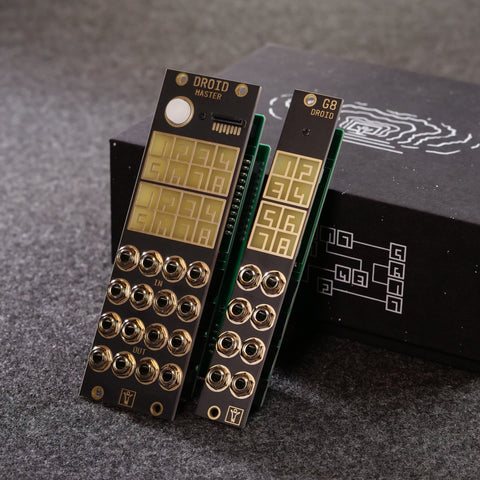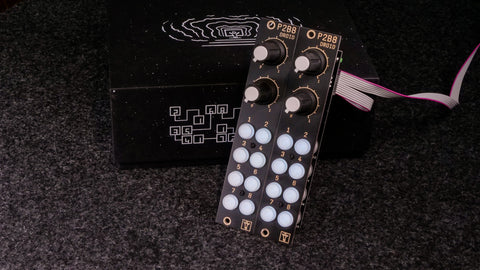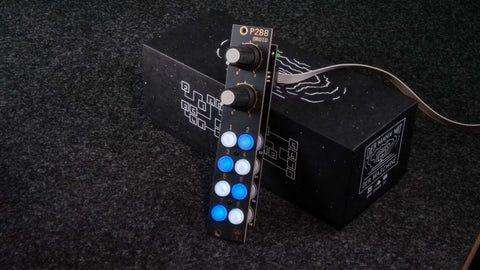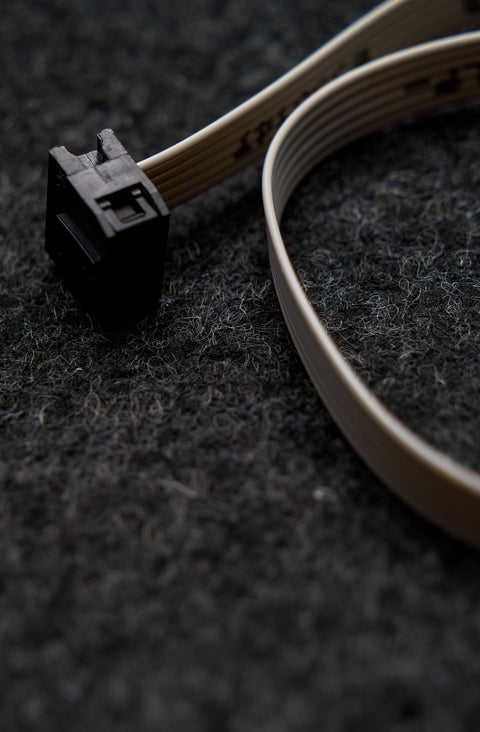About DROID
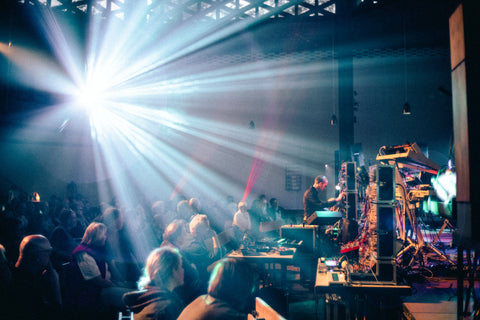
DROID - Universal CV Processor
DROID universal CV generator and processor
The DROID is a very flexible generic CV processor for modular synthesizers in the Eurorack (Doepfer) format. It is more than a module: Droid is a whole ecosystem.
The center is a master module. Currently there are two choices: the classic MASTER with 8 CV inputs and 8 CV outputs, all ranging from -10V to +10V. And the new MASTER18, with 8 CV outputs, 4 gate outputs, 2 gate inputs and MIDI integration with USB and TRS/DIN.
The DROID can do almost any CV task you can imagine, such as sequencing, melody generation, slew limiting, quantizing, switching, mixing, working on clocks and triggers, creating envelopes and LFO or other fancy voltages, or any combination of these at the same time. While doing this, is very precise both in voltage and in timing.
You tell your DROID what to do by creating a “DROID patch”. This is done with a application for Mac or Windows, called "DROID Forge". The Forge is available for free on our downloads page. Alternatively you can edit the patch manually with any text editor you like.
Controllers and expanders
There are various controllers that you can attach to the master, each having a different number of buttons, potentionmeters (knobs), switches or motorized faders. With these you get direct access to any function in your patch. So you can control any parameter you like while playing your music.
The G8 expander gives you 8 more jacks, which can be used for gate or trigger inputs and outputs.
The X7 expander gives the classic MASTER full MIDI connectivity, both via USB and DIN. You can both receive and send MIDI events and create super flexible applications. The MASTER18 has also the functionality (and one additional pair of MIDI IN/OUT) directly built in, so you don't need an X7 there.
The Circuits
The building blocks of a DROID patch are called circuits. Every type of circuit performs some specific task. A circuit is very much like a Eurorack module itself. Some of these do basic things like slew limiting, sample & hold or switching. Others are much more comlex, such as an advanced trigger sequencer with algorithmic extensions. Just like a Eurorack module, each ciruit has inputs and outputs. You can wire these either directly to one of the 16 jacks, or even connect them internally. Every parameter can be CV controlled.
Here are a few examples of what your DROID can be for you. As long as you do not run out of inputs and outputs you can implement as many of these functions at the same time in one DROID. You also can connect them together internally.
- LFO
- Envelope generator
- Melody and trigger sequencer
- Random generator, bernoulli gate
- Sample and hold
- Precision adder
- Slew limiter
- Clock tool with divider, multiplier and delay
- Logical and mathematical functions
- CV looper
- Euclidean rhythms generator
- Versatile musical quantizer, octave switch
- Addressable and clockable CV switch
- CV mixing and routing matrix
- VCO precision calibrator
- ... and many many more...
You can use these circuits either directly - just like normal Eurorack modules - or combine them internally in order to implement more complex functions. Then you can assign pots, buttons, switches and faders of your controllers for switching, tuning and live performing with these. Basically you can transform your Eurorack modular system into your own custom instrument. Or you simply use the DROID as a replacement for several utility modules, because it is very space efficient.
